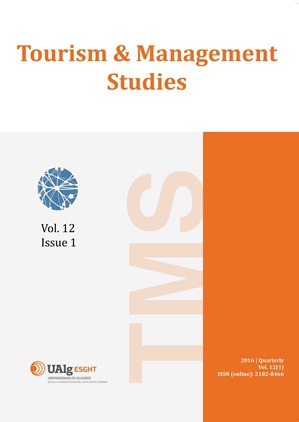Tourism and economic growth in Portugal: An empirical investigation of causal links
Keywords:
Tourism-led growth hypothesis, domestic tourists, international tourists, cointegration analysis, PortugalAbstract
This study is designed to investigate the relationship between real income and both national and international tourism volume for Portugal. The study uses quarterly data and covers the period for 1995-2015. The stationary properties of the time series data are examined by using conventional and endogenous break unit root tests. The Johansen maximum likelihood cointegration and Toda-Yamamoto Granger causality tests are employed to search for a long-run relationship along with causality among the variables. The findings of the tests provide evidence for the existence of long-run cointegration relationship between arrivals at tourist accommodation establishments and real income. The causality results show that real income is caused by foreign tourist’s arrivals, and detect bilateral causality between domestic tourists and foreign tourists.
Downloads
Published
Issue
Section
License
Copyright (c) 2016 Tourism & Management Studies

This work is licensed under a Creative Commons Attribution-NoDerivatives 4.0 International License.
The journal retains published articles’ copyrights, but they are simultaneously licensed under the Creative Commons Attribution License (CC BY-NC-ND), which allows individuals’ to share the relevant papers as long as authorship and publication in this journal are duly acknowledged.



